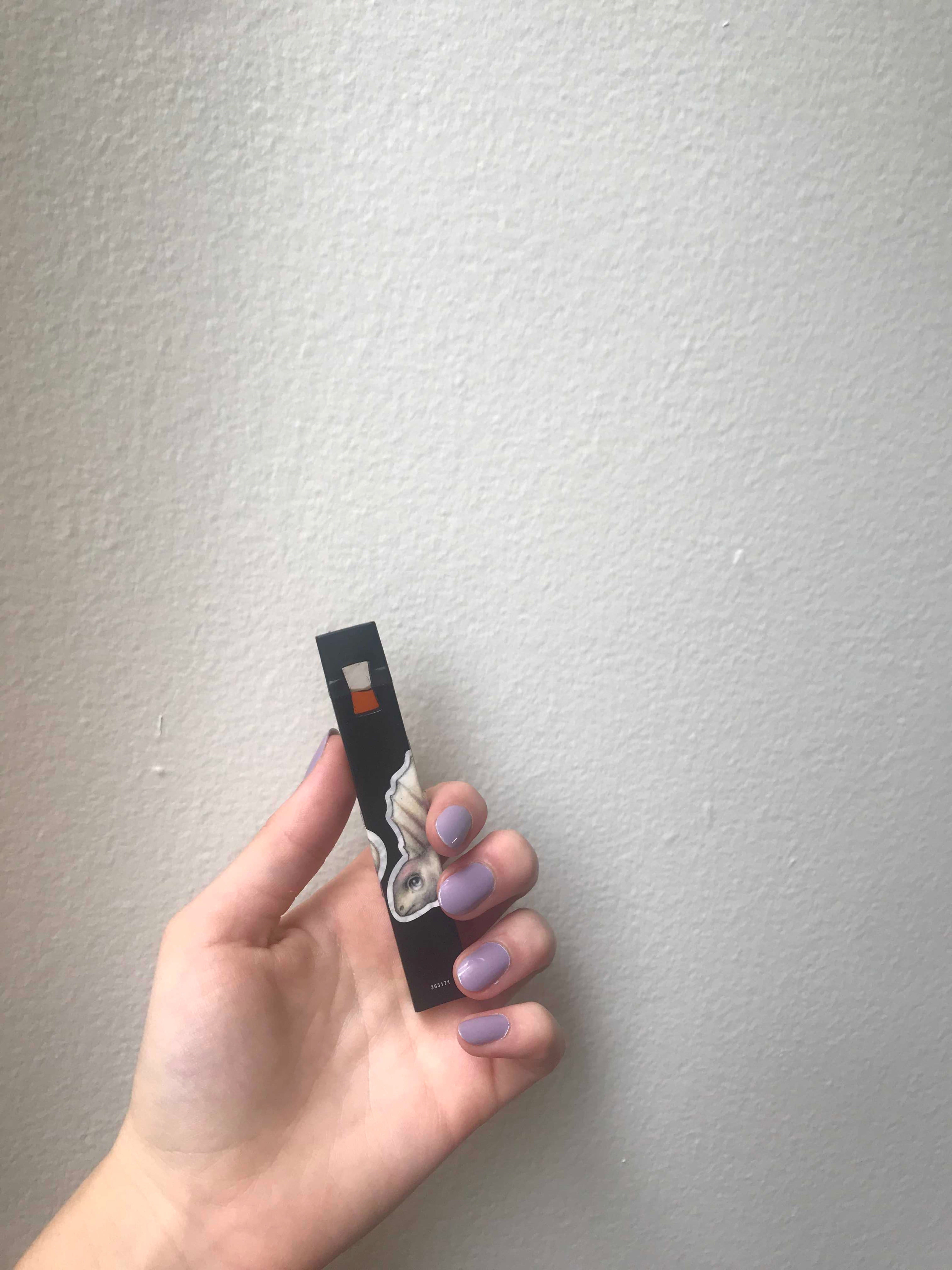While the talk of e-cigarettes has existed since 1927, JUULs have become a phenomenon in our culture relatively recently, according to the Consumer Advocates for Smoke Free Alternatives Association.
When a curious consumer clicks onto JUUL’s website, they are met with a pop-up immediately: “JUUL Labs’ mission is to eliminate cigarettes. JUUL is intended for adult smokers who want to switch from combustible cigarettes,” with a button that must be pressed stating the user is over the age of 21 before the site becomes accessible. Much of the website does appear to be geared towards former smokers, as a way to help them quit— which is the goal of many, if not all, e-cigarettes. But how many JUUL-users are actually trying to cut their addiction?
According to Dr. Mercola, a health website, a study conducted by the CDC reported that of people aged 18-24 who used vapes, approximately 40 percent had not previously been smokers. Potentially even more concerning, in 2016 it was estimated that more than 2 million middle and high schoolers had used vapes within the past 30 days The website chalked up the JUUL’s popularity to a few factors: it has fun flavors like mango, creme or cucumber, it can be easily recharged and, frankly, they look “cool.” Unfortunately, many of these first-time nicotine users quickly get addicted to the pods, which contain as much of the chemical as a pack of cigarettes, according to Today.
But are JUULs and other e-cigarettes safe? Unfortunately, because vaping has recently become extremely popular, not a lot of studies have been conducted on the long-term effects of using them. JUUL Labs’ website has two fine-printed warnings on the bottom of their webpage: one declaring that JUULs contain nicotine, which is an addictive chemical, and another, slightly more concerning caution: the California Proposition 65 Warning. The warning, written as “this product contains chemicals known to the state of California to cause cancer and birth defects or other reproductive harm,” has been used since 1986, according to the American Cancer Society. It can be found on many things, from pesticides and electrical wires to food items and jewelry. The law is updated every year with newfound chemicals that are known to have some potential risk of causing cancer or birth defects, with the full list now totaling about 800. It is not immediately clear exactly which of those chemicals can be found in JUULs.
In the end, vapes like JUUL were made for smokers to cut their habit, even warning “those who don’t currently use nicotine products should not start,” and several other messages that stress the fact that this device is not intended for minors. But no matter which way you spin it, adults under the age of 21, minors and non-smokers are getting their hands on these products and getting addicted to nicotine. While they could potentially be a safer alternative to cigarettes as they are marketed, that doesn’t mean they a wholly safe. For now, we have to hope that vaping and e-cigarettes don’t become the equivalent of the cigarette epidemic for our generation in the future.


